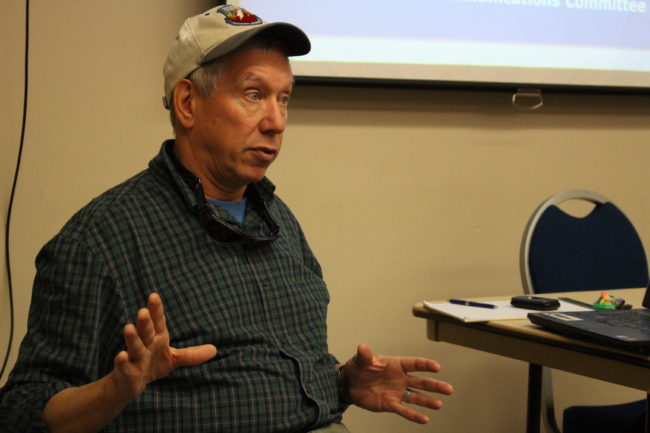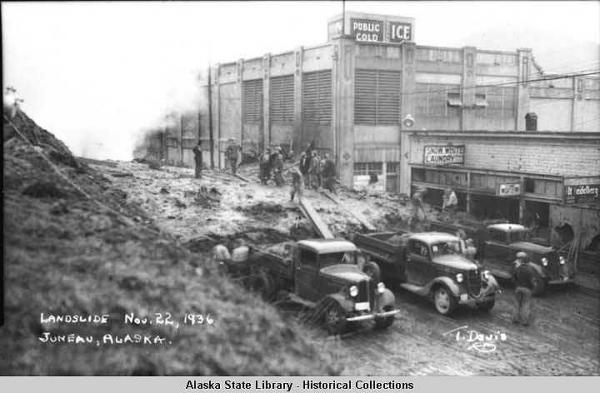
This past weekend, a Juneau Preparedness Expo gave the public a variety of information on how to cope in an emergency. One lecture more relevant than ever was on mudslides and landslides–just weeks after Sitka’s deadly disaster.
Joel Curtis from the National Weather Service told a small but captive audience about the mechanics of a slide.
He’s witnessed the damage firsthand. A couple of weeks ago he was on an ordinary business trip in Sitka, where he had been helping out with a diesel spill.
“And I get another message. Could you please come to the firehall immediately. One of the things we had talked about in the forecast the day before was some heavy rain combined with some wind,” he said.
Curtis rushed to the fire station and that’s when they told him.
“‘Joel, we need you to be the incident meteorologist on this. We just had a mudslide and three people are missing.’ It was terribly emotional, at least to me.”
The mudslide claimed the lives of three people. An intensive search uncovered the bodies of brothers Elmer and Ulises Diaz, who had been painting a house in the area. It took longer to find the third person: building inspector, William Stortz.
For Curtis, that really hit home.
“Knowing that this much beloved individual was missing was really, really tough,” he said. “But at the same time you just have to set that aside and go to work and do the things that you do to contribute to the recovery operation.”

Curtis helped by monitoring the weather, and Stortz’s body was located before more rain fell.
He says there are some differences between the conditions in Sitka and Juneau. For instance, Sitka gets the brunt of oceanic weather. Juneau has taller mountains to the East. But could the same thing happen here?
Tom Mattice, the city’s emergency coordinator, said it already has. One of Juneau’s most destructive slides occurred in 1936, covering South Franklin Street and killing 15.
Although there’s little anyone can do to prevent it, Mattice said there are steps people can take to protect themselves–like have an evacuation route. Five years ago, Centennial Hall was used as a safe space when a slide hit Gastineau Avenue.
“If you live in an area that’s a mass wasting zone, an avalanche zone, a mudslide zone. On days with high wind, on days on high precip, it’s a good idea to go somewhere else,” Mattice said.
Joel Curtis agrees. He said since Southeast is a temperate rainforest, landslides are inevitable.
“They’re hazards and they’re big and they’re natural and there’s a lot of force in them. I think being prepared is the answer.”
Curtis says for him, that’s having an emergency bag packed and being able to evacuate with his dog and cat.
